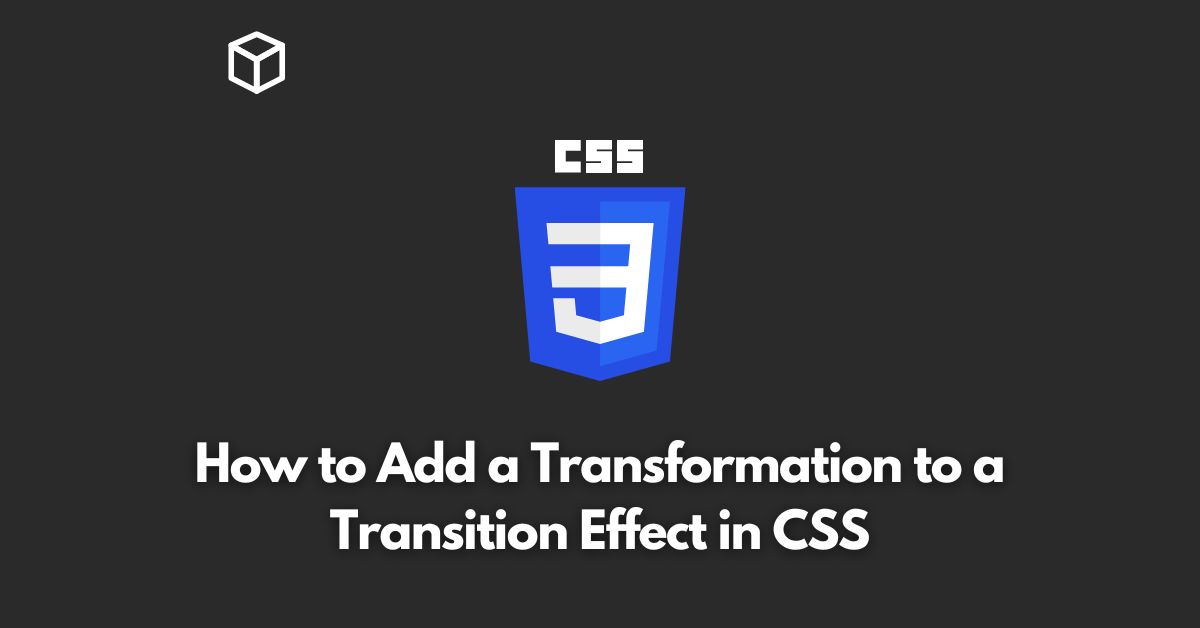CSS Transitions allow you to change property values smoothly, over a given duration.
Transitions are a great way to add some visual interest to your website, and can be used to create hover effects, animations, and more.
In this CSS tutorial, we’ll explore how to add a transformation to a transition effect in CSS.
First, let’s take a look at the basic syntax for a CSS transition.
The transition property is used to specify the properties that you want to animate, and the duration of the animation.
Here’s an example:
selector {
transition: property duration;
}In this example, “selector” is the element that you want to animate, “property” is the CSS property that you want to animate, and “duration” is the length of time that the animation should take.
For example, if you want to animate the background color of a button when the user hovers over it, you might use the following code:
button {
background-color: blue;
transition: background-color 0.5s;
}
button:hover {
background-color: red;
}In this example, the background color of the button will change from blue to red smoothly over 0.5 seconds when the user hovers over it.
Now, let’s take a look at how to add a transformation to a transition effect.
Transformations are used to change the position, rotation, scale, and other properties of an element.
To add a transformation to a transition, you’ll need to use the “transform” property.
Here’s an example:
selector {
transform: rotate(45deg);
transition: transform 1s;
}In this example, the element will rotate smoothly from 0 degrees to 45 degrees over 1 second.
You can also use the transform property to scale, skew and translate elements as well.
selector {
transform: scale(1.2);
transition: transform 1s;
}In this example, the element will scale smoothly from 1 to 1.2 over 1 second.
selector {
transform: skew(10deg,5deg);
transition: transform 1s;
}In this example, the element will skew on X-axis by 10deg and Y-axis by 5deg smoothly over 1 second.
selector {
transform: translate(100px,50px);
transition: transform 1s;
}In this example, the element will translate on X-axis by 100px and Y-axis by 50px smoothly over 1 second.
In conclusion, CSS transitions are a powerful tool for adding visual interest to your website.
By combining transitions with transformations, you can create animations that are both smooth and engaging.
With the examples above, you should be able to add transitions and transformations to your website with ease.
Also Read:
How Do I Vertically Center Text With CSS
How to Add a Blur Effect to the Shadow in CSS
How to Add a Button to an Image With CSS
How to Add a Color to the Shadow in CSS
How to Add a Form to a Full-width Image With CSS
How to Add Color and Blur Effect to Box-shadow in CSS
How to Add Color to Box-shadow in CSS
How to Add Different Colors to a Hyperlink in CSS
How to Add different colors to visited/unvisited links in CSS
How to Add Rounded Corners to Elements in CSS
How to Add space between an outline and the border of an element in CSS
How to Add White Text With Black Shadow in CSS
How to Align Images Side by Side With CSS
How to Align the text in CSS
Resources and References:




